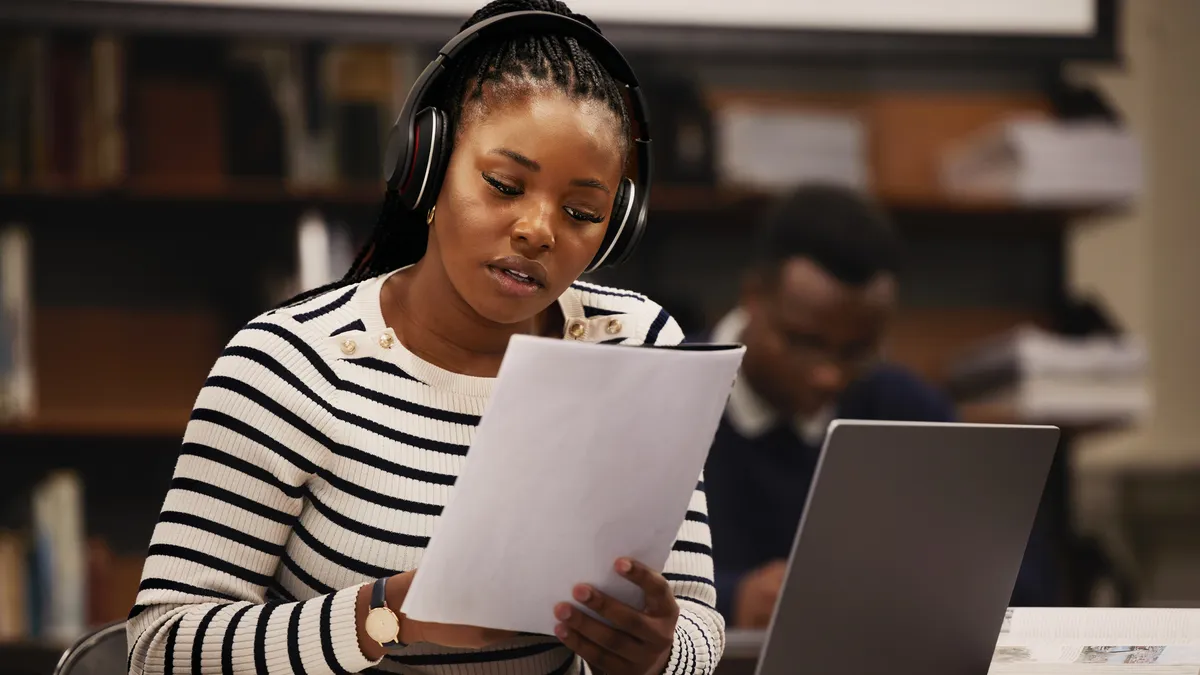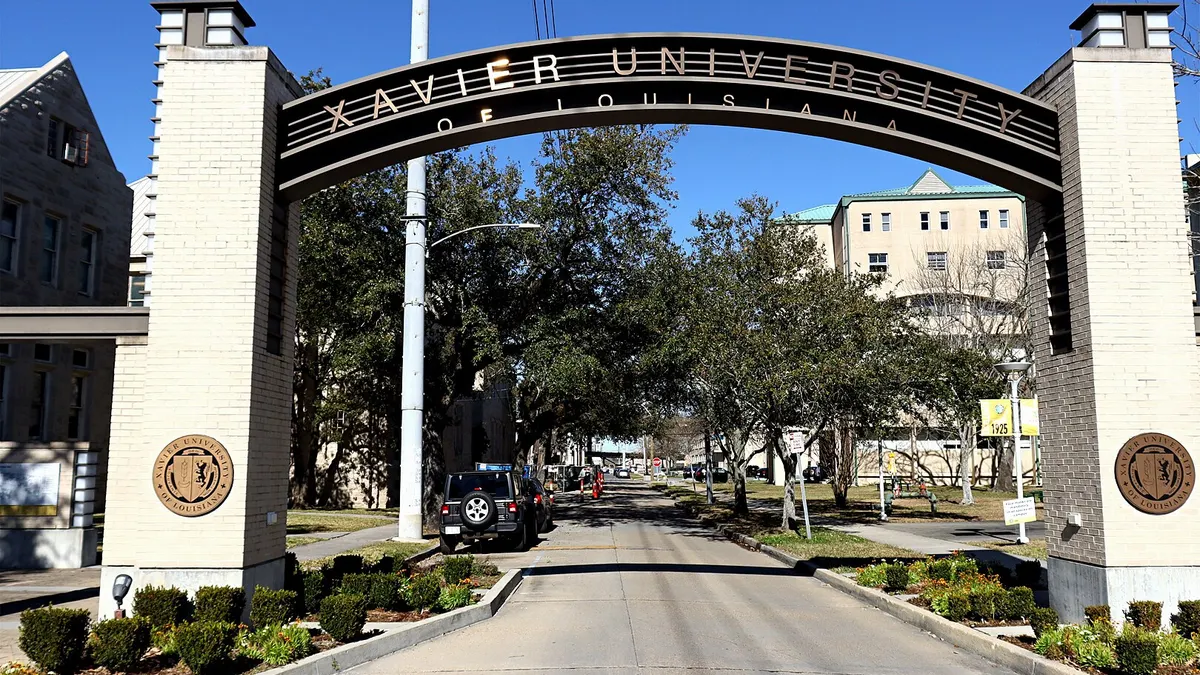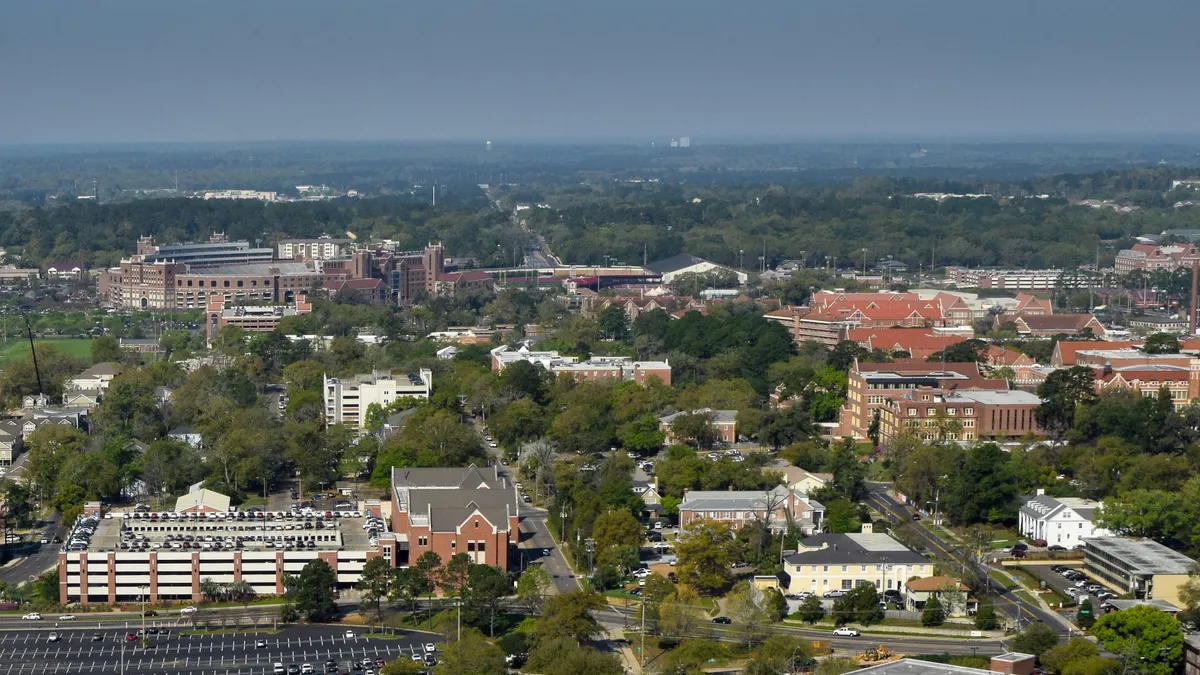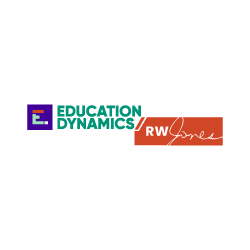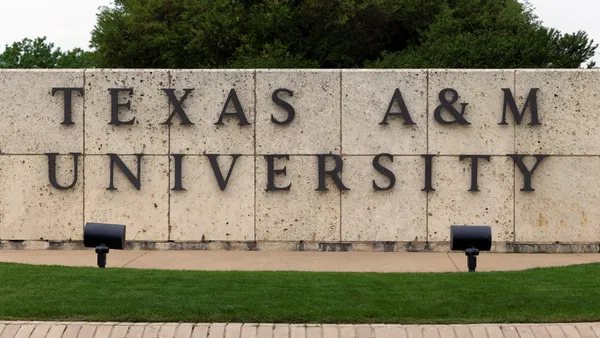Dive Brief:
- An increase in state appropriations can bolster graduation rates at public four-year colleges, especially among Black and Latinx students, concludes a peer-reviewed study in the Journal of Education Finance.
- A 10% increase in state appropriations boosted overall six-year graduation rates by 0.59 percentage points, according to researchers’ models. Those higher appropriations yielded a 0.84 percentage point increase in Latinx students’ graduation rate and a 0.99 percentage point increase in Black students’ graduation rate.
- Researchers concluded that raising state appropriations can help boost graduation rates of underrepresented students and meet college attainment goals.
Dive Insight:
Past research has linked higher state appropriations with better graduation rates, but it has not established that relationship for students who are underrepresented in higher education, such as Black and Latinx students. The paper — by researchers at the Midwestern Higher Education Compact, the University of Minnesota, Adams State University and the University of Georgia — concludes that increases in funding leads to more pronounced gains among those groups.
“The findings indicate that changes in state appropriations can have modest but meaningful effects on whether students from diverse racial and ethnic backgrounds ultimately succeed in college,” the researchers wrote. “Moreover, past reductions in appropriations have likely thwarted progress towards state college attainment goals by limiting institutional effectiveness.”
State appropriations typically help keep costs down for students, but have been declining as a portion of revenue at public colleges.
Between the 2007-08 and 2017-18 academic years, state appropriations fell from 23.8% of revenue to 16.6%, according to government data cited by the paper. The share of revenue from tuition and fees grew from 17.9% to 20.5% over the same period.
The paper is based on data from first-time, full-time cohorts who entered college between 2007 and 2012 across 415 public four-year institutions. The researchers controlled for tuition, aiming to capture the role of state appropriations when colleges use them to increase institutional quality rather than decrease cost. The models also controlled institutional type and student characteristics.
The impact of increased appropriations on graduation rates varied widely and differed depending on the type of institution. Some colleges, for example, saw graduation rates decrease as a result of a 10% increase in appropriations, the model showed.
Historically Black colleges and universities, on the other hand, saw higher graduation rate increases among Black students than other institutions. When appropriations rose 10%, the six-year graduation rate of Black students increased by 1.55 percentage points at HBCUs.
Institutions that rely heavily on state subsidies also saw greater effects on graduation rates than colleges with medium or low reliance on government money.
A 10% increase in state appropriations could have yielded roughly 5,500 additional graduates among the cohort who entered college in 2012, according to the study.
“Public colleges and universities are increasingly expected to do more with less, to improve student completion rates as direct appropriations decline and college costs rise,” authors wrote. “This study demonstrates that state funding for public institutions should be bolstered, not weakened, to raise college completion rates.”

